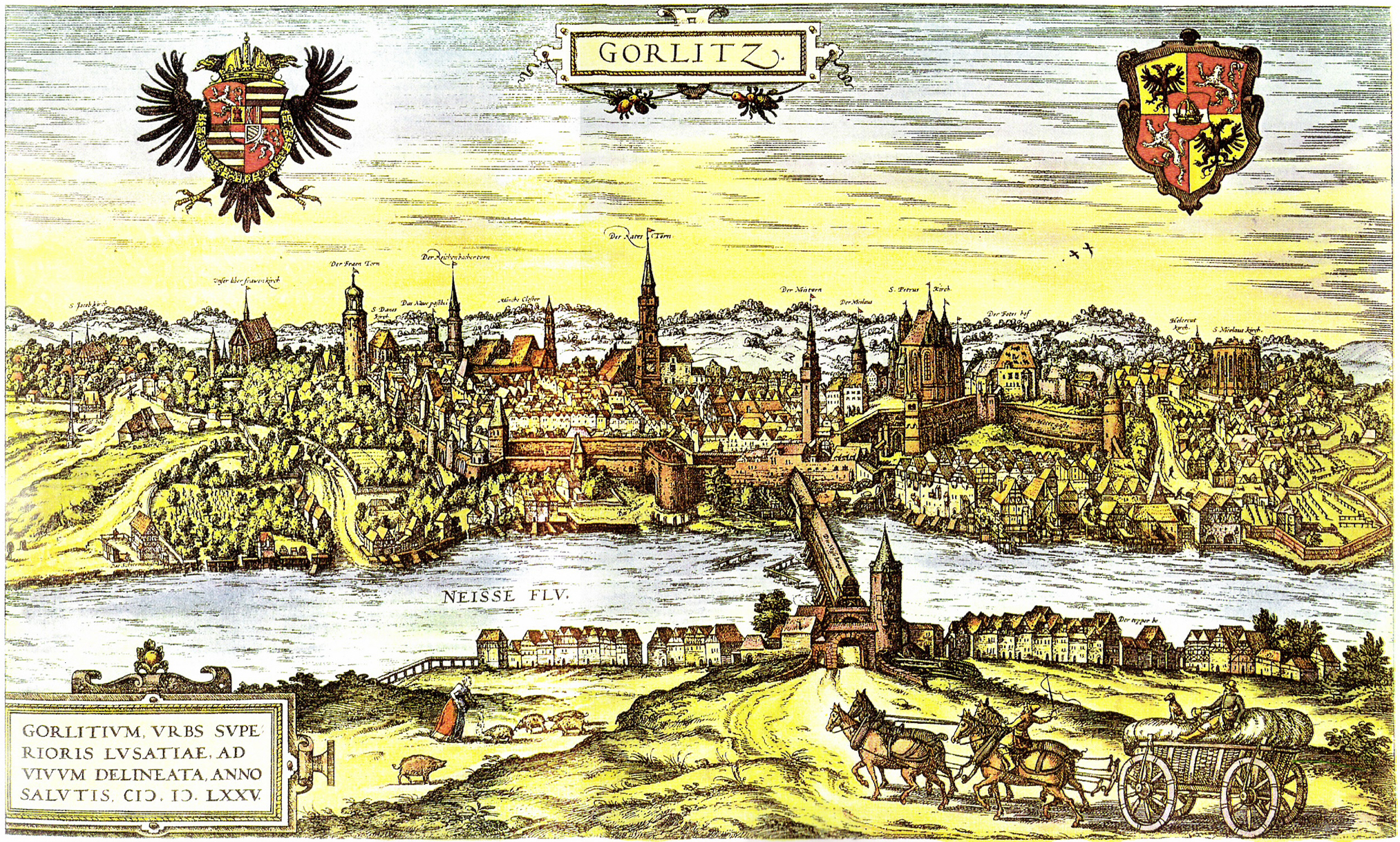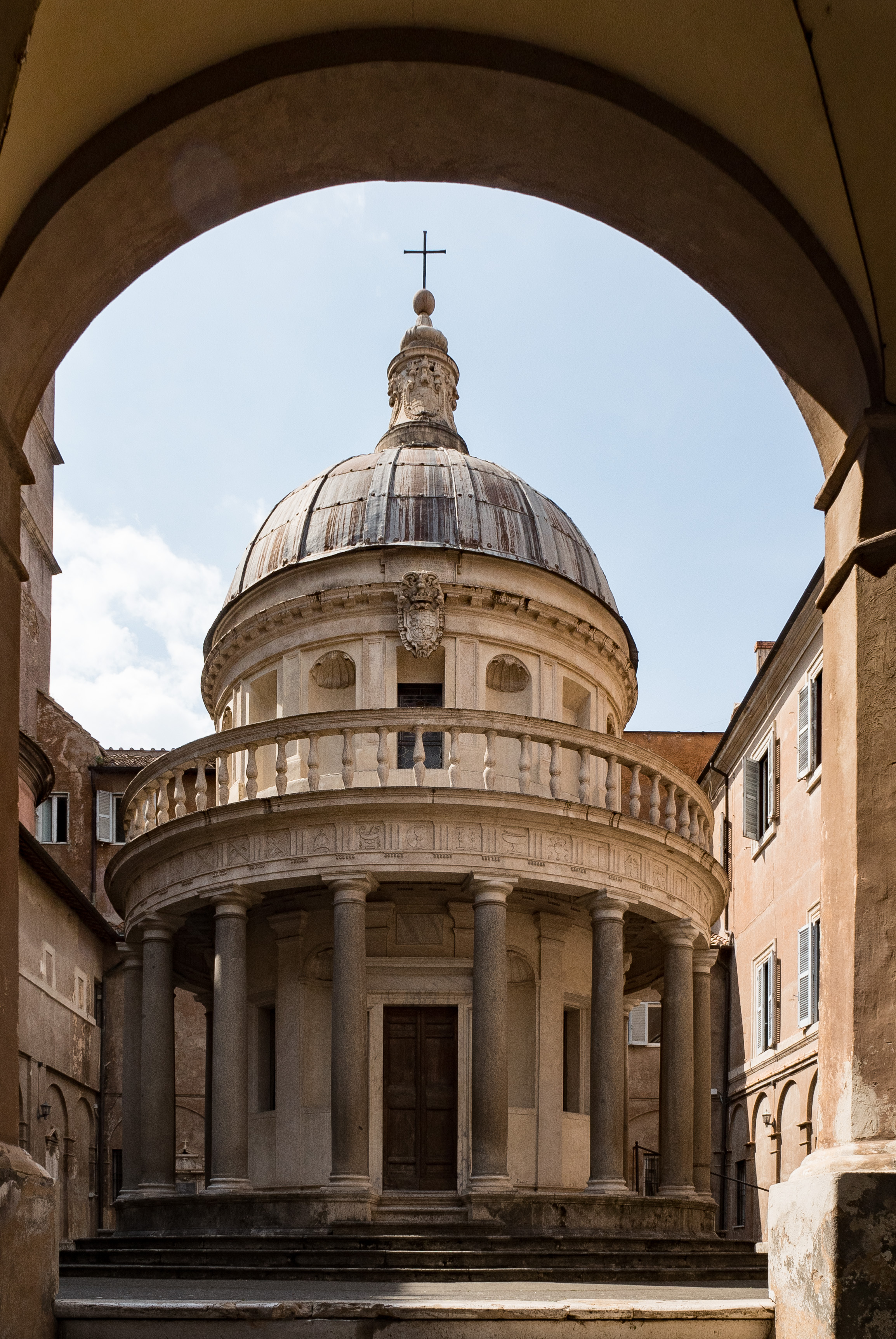|
Wendel Roskopf
Wendel Roskopf the Elder (* 5 February 1485 – 1490; † 25 June 1549 in Görlitz) was a stonemason, master builder and member of the cities council 1523 to 1548. In 1526 onwards he was the towns council chief builder. Work After Görlitz burned down in 1525, Roskopf built the Schönhof, the town's first Renaissance building - it was restored in 2006 to house the town'Silesian Museum From 1537 to 1539 he also headed the construction of the town hall staircase. He also designed the Archivflügel (archives wing) of the town hall In local government, a city hall, town hall, civic centre (in the UK or Australia), guildhall, or a municipal building (in the Philippines), is the chief administrative building of a city, town, or other municipality. It usually houses .... He owned the house whose address is now Bierhof Rosengasse 4. Bibliography * Inga Arnold: ''Wendel Roskopf der Ältere und die Renaissance in Görlitz'', Denkmalpflege in Görlitz, Nr. 8, 1999, S. 4 - ... [...More Info...] [...Related Items...] OR: [Wikipedia] [Google] [Baidu] |
Görlitz
Görlitz (; pl, Zgorzelec, hsb, Zhorjelc, cz, Zhořelec, East Lusatian dialect: ''Gerlz'', ''Gerltz'', ''Gerltsch'') is a town in the German state of Saxony. It is located on the Lusatian Neisse River, and is the largest town in Upper Lusatia as well as the second-largest town in the region of Lusatia, after Cottbus. Görlitz is the easternmost town in Germany (easternmost village is Zentendorf (Šćeńc)), and lies opposite the Polish town of Zgorzelec, which was the eastern part of Görlitz until 1945. The town has approximately 56,000 inhabitants, which make Görlitz the sixth-largest town in Saxony. It is the seat of the district of Görlitz. Together with Zgorzelec, it forms the Euro City of Görlitz/Zgorzelec, which has a combined population of around 86,000. While not Lusatiophone itself, the town is situated just east of the Sorbian-speaking parts of Lusatia. The town's recorded history began in the 11th century as a Sorbian settlement. Through its histor ... [...More Info...] [...Related Items...] OR: [Wikipedia] [Google] [Baidu] |
Stonemasonry
Stonemasonry or stonecraft is the creation of buildings, structures, and sculpture using stone as the primary material. It is one of the oldest activities and professions in human history. Many of the long-lasting, ancient shelters, temples, monuments, artifacts, fortifications, roads, bridges, and entire cities were built of stone. Famous works of stonemasonry include the Egyptian pyramids, the Taj Mahal, Cusco's Incan Wall, Easter Island's statues, Angkor Wat, Borobudur, Tihuanaco, Tenochtitlan, Persepolis, the Parthenon, Stonehenge, the Great Wall of China, and Chartres Cathedral. Definition Masonry is the craft of shaping rough pieces of rock into accurate geometrical shapes, at times simple, but some of considerable complexity, and then arranging the resulting stones, often together with mortar, to form structures. *Quarrymen split sheets of rock, and extract the resulting blocks of stone from the ground. *Sawyers cut these rough blocks into cuboids, to requ ... [...More Info...] [...Related Items...] OR: [Wikipedia] [Google] [Baidu] |
Renaissance Architecture
Renaissance architecture is the European architecture of the period between the early 15th and early 16th centuries in different regions, demonstrating a conscious revival and development of certain elements of ancient Greek and Roman thought and material culture. Stylistically, Renaissance architecture followed Gothic architecture and was succeeded by Baroque architecture. Developed first in Florence, with Filippo Brunelleschi as one of its innovators, the Renaissance style quickly spread to other Italian cities. The style was carried to Spain, France, Germany, England, Russia and other parts of Europe at different dates and with varying degrees of impact. Renaissance style places emphasis on symmetry, proportion, geometry and the regularity of parts, as demonstrated in the architecture of classical antiquity and in particular ancient Roman architecture, of which many examples remained. Orderly arrangements of columns, pilasters and lintels, as well as the use of semici ... [...More Info...] [...Related Items...] OR: [Wikipedia] [Google] [Baidu] |
Town Hall Of Görlitz
The Town Hall of Görlitz has been the place of the city's administration and jurisdictions since 1350. It was first mentioned in a document by the Görlitz council in 1369. Its interior dates back partly to the Renaissance period and baroque period. Over the centuries the administration grew, so did the town hall. It utilises several buildings of different epoches on the Lower Market Square 6–8. The town hall tower was raised in the 16th century, in 1524 a clock with two dials was added. Those were modified in 1584 by ''Bartholomäus Scultetus'' who joined the mechanisms of the day time clock with the upper moon phase clock. Wendel Roskopf the Elder built a council besides the staircase. In 1591 a stone Lady Justice was added - a symbol of high Jurisdiction of the cities council. The heraldic relief from 1488 by King Matthias Corvinus of Hungary and Bohemia indicates the affiliation to Upper Lusatia. In 1903 the new town hall extension building in Renaissance Revival ar ... [...More Info...] [...Related Items...] OR: [Wikipedia] [Google] [Baidu] |
1480 Births
148 may refer to: *148 (number), a natural number *AD 148, a year in the 2nd century AD *148 BC, a year in the 2nd century BC * 148 (album), an album by C418 Daniel Rosenfeld (born 9 May 1989), better known by his stage/online name C418 (pronounced "see four eighteen"), is a German musician, producer and sound engineer, best known as the composer and sound designer for the sandbox video game ''Minec ... * 148 (Meiktila) Battery Royal Artillery * 148 (New Jersey bus) See also * List of highways numbered 148 * {{Number disambiguation ... [...More Info...] [...Related Items...] OR: [Wikipedia] [Google] [Baidu] |
1549 Deaths
__NOTOC__ Year 1549 ( MDXLIX) was a common year starting on Tuesday (link will display the full calendar) of the Julian calendar. In the Kingdom of England, it was known as "The Year of the Many-Headed Monster", because of the unusually high number of rebellions which occurred in the country. Events January–June * January – Burmese–Siamese War (1547–49): King Tabinshwehti of Burma begins his invasion of the Ayutthaya Kingdom, which ends in retreat. * February 3 – Burmese–Siamese War: Burmese viceroy Thado Dhamma Yaza I of Prome slays Sri Suriyothai, queen consort of the Ayutthaya Kingdom, on her war elephant, when she intervenes in battle to protect the life of her husband. * March 29 – The city of Salvador da Bahia, Brazil's first capital, is founded by Tome de Sousa. July–December * June 9 – The Book of Common Prayer is introduced in English churches; the Prayer Book Rebellion against it breaks out in the West Country ... [...More Info...] [...Related Items...] OR: [Wikipedia] [Google] [Baidu] |
15th-century German People
The 15th century was the century which spans the Julian dates from 1 January 1401 ( MCDI) to 31 December 1500 ( MD). In Europe, the 15th century includes parts of the Late Middle Ages, the Early Renaissance, and the early modern period. Many technological, social and cultural developments of the 15th century can in retrospect be seen as heralding the " European miracle" of the following centuries. The architectural perspective, and the modern fields which are known today as banking and accounting were founded in Italy. The Hundred Years' War ended with a decisive French victory over the English in the Battle of Castillon. Financial troubles in England following the conflict resulted in the Wars of the Roses, a series of dynastic wars for the throne of England. The conflicts ended with the defeat of Richard III by Henry VII at the Battle of Bosworth Field, establishing the Tudor dynasty in the later part of the century. Constantinople, known as the capital of the ... [...More Info...] [...Related Items...] OR: [Wikipedia] [Google] [Baidu] |
15th-century Architects
The 15th century was the century which spans the Julian calendar, Julian dates from 1 January 1401 (Roman numerals, MCDI) to 31 December 1500 (Roman numerals, MD). In History of Europe, Europe, the 15th century includes parts of the Late Middle Ages, the Early Renaissance, and the early modern period. Many technological, social and cultural developments of the 15th century can in retrospect be seen as heralding the "European miracle" of the following centuries. The Perspective (graphical), architectural perspective, and the modern fields which are known today as banking and accounting were founded in Italy. The Hundred Years' War ended with a decisive Kingdom of France, French victory over the Kingdom of England, English in the Battle of Castillon. Financial troubles in England following the conflict resulted in the Wars of the Roses, a series of dynastic wars for the throne of England. The conflicts ended with the defeat of Richard III by Henry VII of England, Henry VII at th ... [...More Info...] [...Related Items...] OR: [Wikipedia] [Google] [Baidu] |
16th-century German Architects
The 16th century begins with the Julian year 1501 ( MDI) and ends with either the Julian or the Gregorian year 1600 ( MDC) (depending on the reckoning used; the Gregorian calendar introduced a lapse of 10 days in October 1582). The 16th century is regarded by historians as the century which saw the rise of Western civilization and the Islamic gunpowder empires. The Renaissance in Italy and Europe saw the emergence of important artists, authors and scientists, and led to the foundation of important subjects which include accounting and political science. Copernicus proposed the heliocentric universe, which was met with strong resistance, and Tycho Brahe refuted the theory of celestial spheres through observational measurement of the 1572 appearance of a Milky Way supernova. These events directly challenged the long-held notion of an immutable universe supported by Ptolemy and Aristotle, and led to major revolutions in astronomy and science. Galileo Galilei became a champion of ... [...More Info...] [...Related Items...] OR: [Wikipedia] [Google] [Baidu] |




